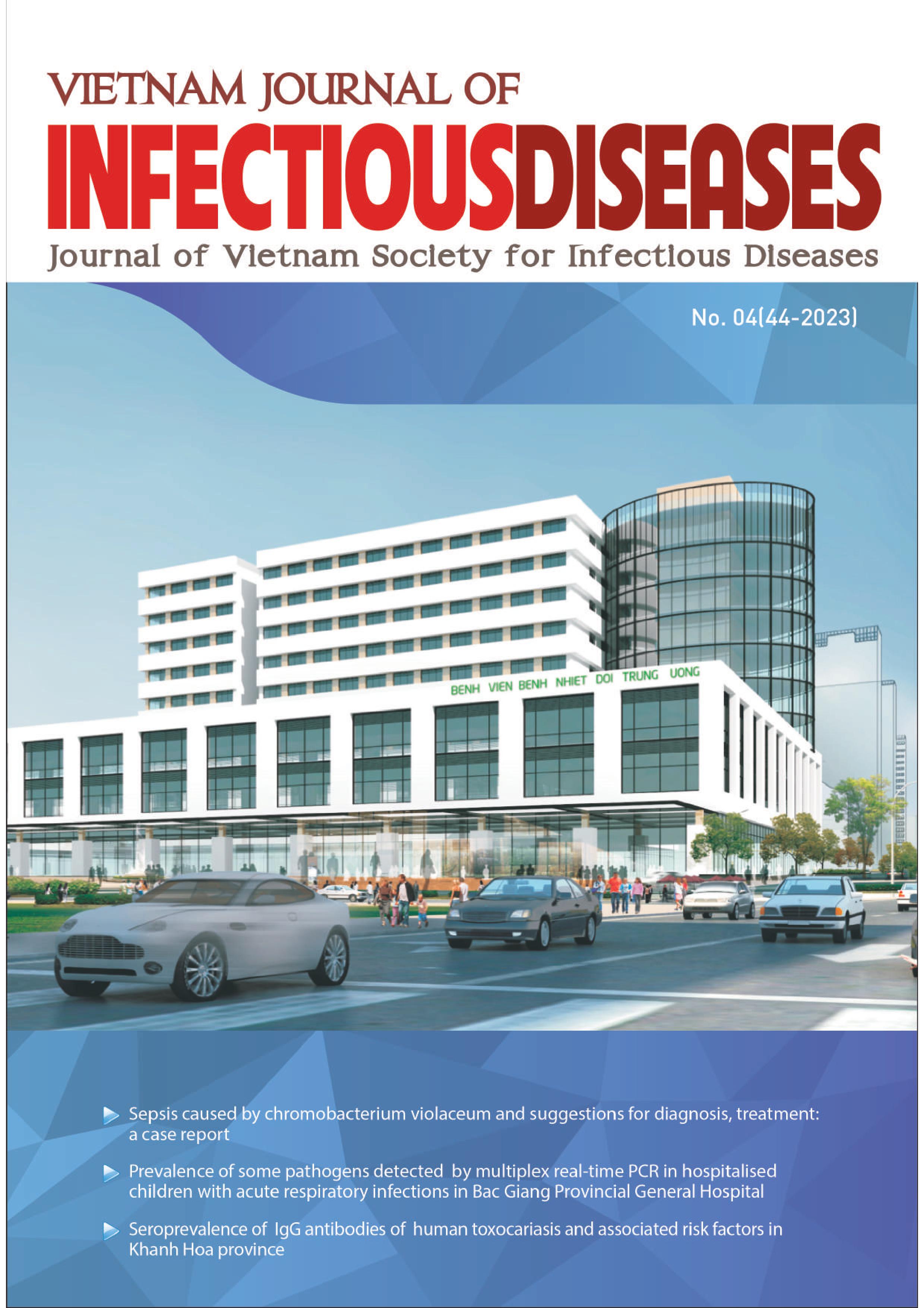CLINICAL AND SUBCLINICAL CHARACTERISTICS OF THE PATIENTS WITH DENGUE HEMORRHAGIC FEVER THAI NGUYEN
Nội dung chính của bài viết
Tóm tắt
Objectives: Describe clinical and subclinical characteristics of patients with dengue hemorrhagic fever (DHF) in Thai Nguyen.
Subjects and methods: Retrospective study on 43 patients diagnosed with DHF according to the standard of the Ministry of Health in 2019.
Results: The most common age was 35 - ≤ 60, accounting for 25/43 (58.1%), the least common age was ≤ 16 years old (4.6%). The mean of age was 43.6 ± 16.5; Male (55.8%) was higher proportion than female (44.2%). Patients lived in 15/21 wards and 1/11 communes in Thai Nguyen city; 4/6 districts included Phu Binh, Vo Nhai, Dai Tu and Dong Hy. Patients had fever accounted for the highest rate of 100%, followed by bleeding 31/43 (72.1%), abdominal pain or tenderness10/43 (23.2%), vomiting 7/43 (16.3%), diarrhea (9.3%), pleural effusion and acites 4.6%. Patients with hematocrit 35 - 45% accounted for the highest proportion of 21/43 (48.8%); Next, hematocrit > 45% accounted for 20/43 (46.6%). Patients with low platelets 5 - < 50 accounted for the highest
proportion of 22/43 (51.2%), followed by 20/43 (46.5%) of patients with platelets of 50 - < 150 G/L; No patient had platelets < 5 G/L. Patients with AST 40 - < 400 (U/L) accounted for the highest proportion of 35/43 (81.4%), 2/43 (4.6%) patients with AST ≥ 1000 (U/L). Patients with ALT 40 - < 400 (U/L) accounted for the highest proportion in the study 30/43 (69.8%), 1/43 (2.3%) patients had AST ≥ 1000 (U/L). 100% of patients in the study were cured and discharged from the hospital, with no deaths, of which: patients with DHF and DHF with warning signs accounted for the highest rate of 46.6%.
Chi tiết bài viết
Từ khóa
Dengue Hemorrhagic Fever (DHF), Clinical and subclinical characteristics
Tài liệu tham khảo
2. N. Sirisena PDN, S. Mahilkar, C. Sharma, J. Jain,S. Sunil (2021). Concurrent dengue infections: Epidemiology & clinical implications. (0971-5916 (Print).
3. WHO (2023). Dengue and severe dengue. https://www.who.int/news-room/fact-sheets/detail/dengue-and-severe-dengue.
4. Ministry of Health (2019), "Decision No. 3705/QD-BYT On Promulgating Guidelines for Diagnosis and Treatment of Dengue Hemorrhagic Fever," August 22, 2019".
5. T. Nguyen-Tien, D. C. Do, X. L. Le, et al (2021). Risk factors of dengue fever in an urban area in Vietnam: a case-control study. BMC public health. Apr 7 2021; 21(1):664.
6. WHO (2009). Dengue Guidline for diagnosis, treatment, prevention and control - New edition WHO Library Cataloguing-in-Publication Data.
7. S. Sangkaew, D. Ming, A. Boonyasiri, et al (2021). Risk predictors of progression to severe disease during the febrile phase of dengue: a systematic review and meta-analysis. The Lancet.Infectious diseases. Jul 2021; 21(7):1014-1026.
8. T. Tsheten, A. C. A. Clements, D. J. Gray, R. K. Adhikary, L. Furuya-Kanamori,K. Wangdi (2021). Clinical predictors of severe dengue: a systematic review and meta-analysis. Infectious diseases of poverty. Oct 9 2021; 10(1):123.
9. D. H. Ng, J. G. Wong, T. L. Thein, Y. S. Leo,D. C. Lye (2016). The Significance of Prolonged and Saddleback Fever in Hospitalised Adult Dengue. PloS one. 2016; 11(12):e0167025.


